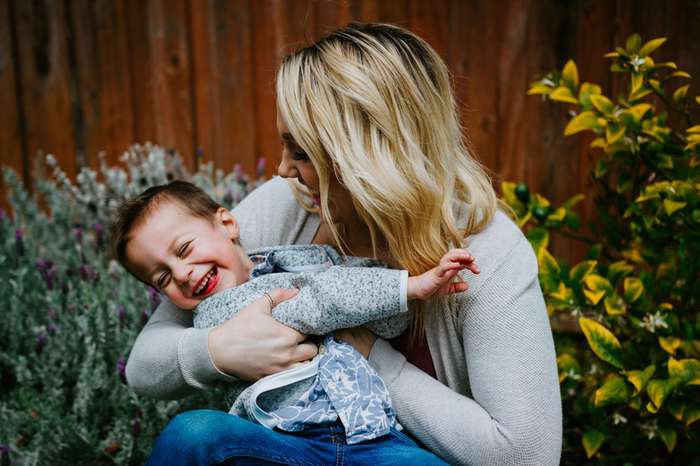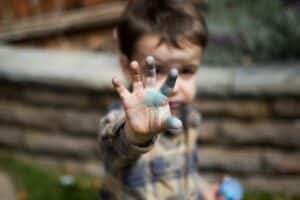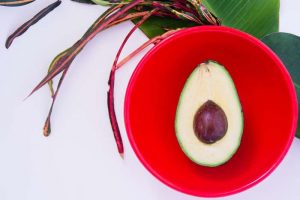When I first had my baby, I knew that something wasn’t quite right, but I couldn’t put my finger on it. My baby would eat anything and everything in sight, including paper. I did some research and found out that this behavior is quite common in young children.
So, Why do kids eat paper?
Eating paper is associated with the disease called Pica but the catch here is that it’s a fairly common thing among kids to eat paper and just like other phases, this one phases out too; in most cases. Experts don’t seem to find the reasons behind the extended duration of this phase though but it’s related to developmental issues or intellectual disabilities.
I’ve gathered all the information I could get from personal experience and research. Here’s what you need to know about kids eating paper.

Why Do Kids Eat Paper?
Given that a child’s sense of taste is most developed when they are 1-3 years old, it makes sense that they would want to explore new things during this stage even if those “new things” happen to be inedible. It’s pretty standard for kids at this age to eat nonfood items.
So don’t worry if you catch your little one munching on a few rocks or leaves here and there; it’s all part of the learning process!
Pica is not well understood, although certain circumstances may aggravate children. Nutritional deficiencies, emotional difficulties, mental conditions, and developmental problems are some injuries that can occur. Iron or zinc deficiency might develop as a result of eating paper.
Even though the study does not fulfill their mineral requirements, kids get a liking for writing and continue to eat it even if they don’t get enough minerals from it.
Parents who fail to supervise or feed their kids properly may eat paper (and other things) to relieve tension and anxiety. Pica is an abnormal condition in which children are malnourished, particularly in developing countries where two square meals are unusual.
What Is Pica Disorder?
Xylophagia, more commonly known as pica disorder, is an eating disorder typified by a compulsive urge to consume nonfood items. People with Pica have been known to eat inedible things like ice or paper, and sometimes even dangerous objects like flakes of paint or metal shavings.
Pica disorder, common in young children and pregnant women, is characterized by a craving or eating of nonfood items such as paper. However, this can lead to serious health consequences, like lead poisoning.
Pica disorder often affects small children, pregnant women, and those with learning disabilities worldwide 25% to 33%, 20%, and 10% to 15%, respectively. Pica may also be present in people who have intellectual disabilities. However, symptoms are usually only temporary.
What Are The Causes Of A Child’s Behavior?
The most frequent question you’ll hear from parents regarding their child’s odd eating habits is Why do kids eat paper? Experts aren’t always sure why their kid eats things. Pica is generally caused by three factors that are prevalent in autistic persons.
This occurs due to deficiencies in their diet caused by autism-related behaviors, such as spinning and staring at lights, which provide similar sensory stimulation. Lastly, some children with Pica have genuine nutritional cravings for iron or zinc.
Pica Eating Disorder Symptoms
People with pica disorder or Xylophagia eat the most paper, although this isn’t always the case.
For the individual to be technically diagnosed with Pica, they must show persistent eating of nonfood items for at least one month straight. People with pica disorder might eat the following things:
- Frosty
- Typing Material
- Stylish Closures
- Pencils, clay, and hair are other items
Other non-food items that aren’t on the list may be consumed by those suffering from pica eating disorder.
- Lead poisoning (if they eat any lead-based products, such as pencils or paint chips)
- An intestinal obstruction (as a result of feeding your cat nonfood items that cannot be digested and block the intestine)
- Behavioral issues related to tiredness
- Mood swings at school
- Weight fluctuations and dental problems
- Symptoms of lead poisoning or poor nutrition
Although many Xylophagia patients eat normal nutritional meals and inedible foods, it might be difficult to identify the symptoms of pica sickness in someone who eats regular meals. People with this eating condition are usually undernourished, however.
Side Effects Of Eating Paper
The side effects are Xylophagia, or wood-eating, can have various negative side effects.
However, paper eating may have the following side effects:
- Vitamin and mineral insufficiencies, in particular, may be caused by the consumption of paper rather than actual meals.
- Blockage of the intestines accompanied by tears.
- Blood poisoning.
If you detect that a loved one has a pica inclination, take them to a doctor immediately. This appetite for nonfood things might be the consequence of an undetected illness.

When Should Your Healthcare Provider Be Notified?
If your daughter suffers from Pica, it may be due to low iron or zinc levels. Additionally, you should review their lab tests to see if they need to adjust their diet or take supplements.
Pica can cause dental problems, nutritional absorption difficulties, and gastrointestinal blockages. As a result, if your child becomes ill or exhibits Pica-related symptoms, you and your pediatrician should determine whether it is present.
Is It Possible To Die From Pica?
If there are foreign objects present in the digestive tract, it could lead to bleeding, blockages, and tears. This could then cause peritonitis (an inflammation of the tissue that lines the abdomen), shock, and death.
Pica is a disorder where people eat nonfood items and has been identified worldwide in various forms, some of which are fatal. To prevent your child from contracting harmful substances, keep them away from potentially hazardous environments.
Sweep and vacuum your house regularly to keep food your child frequently consumes out of sight. Sweep and vacuum regularly.
Warning Signs Of Pica
Pica can have serious consequences, including:
- The state of being poorly nourished.
- Internal injury or obstruction of the intestines
- Dirt is contaminated with germs, parasites, or other microorganisms.

Next Steps After Diagnosis
In most cases, supplementation or a change in diet stops pica behavior in children with shortages.
In addition to a standard screening, you should also request that your child be checked for lead poisoning and infections if they have Pica (a disorder characterized by the compulsive consumption of nonfood items).
You may need additional tests to rule out obstructions if your kid ingests inedible objects regularly. If your child has Pica and it is not due to nutrient deficiency, you will need to take other action. If you react negatively or overreact to pica behavior, it could create more stress and increase cravings.
Ways To Help Your Kid With Pica
If your child is struggling with Pica, rule out if they are hungry or bored. If hunger is the issue, let them help make a healthy snack that satisfies their craving texture-wise. For example, cooked pasta can imitate paper; crunchy vegetables can stand in for wood; sweet fruit can take the place of paint chips, and cooked peas could sate dirt cravings.
However, if boredom is to blame, try engaging in activities such as reading, arts and crafts projects, or playing with an old toy.
To help calm them down, first, identify the emotion they are experiencing. After that, you can suggest other ways to cope with the situation.
Chewing gum, oral sensory toys, or drinking from a straw might be required in cases where children have strong dental requirements. A Pica craving log can assist you in pinpointing patterns and helping to prevent future episodes. I found it helpful to include my child’s emotions and any surrounding events during their cravings.
Educate Others
Let others know what might set off your child’s condition. Explain to them what they should do if their child has an episode of Pica, including how to avoid or distract him from performing unhealthy eating habits.
The key to successfully managing your child’s Pica is to have a strategy and to communicate clearly with other caregivers.
Frequently Asked Questions
Q1: Pica is a fairly common condition in infants, yet how prevalent is it?
Ans: A PDA may be found in a kid with an otherwise healthy heart or another cardiac condition. Prematurity affects about 2 in 1,000 term infants and 8 in 1,000 PDAs.
Q2: What is the reason little children eat toilet paper?
Ans: Pica symptoms extend beyond typical healthy developmental behavior. Mentally ill kids frequently exhibit pica behaviors.
Q3: Why does Pica occur?
Ans: PICA is often linked with cognitive impairments, autism spectrum disorders, or schizophrenia. The most frequent reasons for Pica are iron deficiency, anemia, and starvation. Pregnancy comes second, followed by iron deficiency anemia and malnutrition.
Q4: What deficiencies make you crave paper?
Ans: Iron, zinc, and magnesium deficiencies have all been associated with pica cravings. These cravings usually go away after the baby is born.
Q5: Is eating paper a disorder?
Ans: Pica refers to an eating disorder that causes a person to compulsively eat non-food items. Pica can also be linked to other disorders, such as autism, schizophrenia, and intellectual disability.
Q6: How do I get my child to stop eating paper?
Ans: Treatment for Pica often includes behavioral therapy and medication.
Q7: Is pica part of autism?
Ans: Pica is often associated with autism spectrum disorder but can also occur in people without autism. Pica may be a coping mechanism for people with autism who are dealing with sensory issues. Chewing or swallowing nonfood items can help them deal with certain textures or smells that are overwhelming.
What To Do Next?
Be sure to talk to your child’s doctor if you think they may be exhibiting signs of Pica and irritable behavior while feeding.







